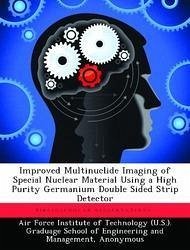Nicht lieferbar

Phase Diversity and Polarization Augmented Techniques for Active Imaging
Versandkostenfrei!
Nicht lieferbar
A firm understanding of the space environment is necessary to defend US access to space-based systems. Conventional imaging systems have been developed to gather information on space-based objects, but they are incapable of imaging objects in the earth's shadow. In order close this gap in imaging-system coverage, an active-illumination based approach must be used. To facilitate this, a multi-frame active phase diversity imaging (APDI) algorithm is derived and demonstrated for the statistics of coherent light. In addition to conventional focal-plane and diversity-plane data, a statistical descr...
A firm understanding of the space environment is necessary to defend US access to space-based systems. Conventional imaging systems have been developed to gather information on space-based objects, but they are incapable of imaging objects in the earth's shadow. In order close this gap in imaging-system coverage, an active-illumination based approach must be used. To facilitate this, a multi-frame active phase diversity imaging (APDI) algorithm is derived and demonstrated for the statistics of coherent light. In addition to conventional focal-plane and diversity-plane data, a statistical description for the pupil-plane intensity distribution is formed and included in the derivation. The algorithm is implemented and characterized using a Monte Carlo approach. Analysis shows that the algorithm is robust, that the effect of system configuration on optimal algorithm parameters is minimal, that the algorithm is insensitive to detection noise for SNR 7, and that it performs well for SNR's as low as 2. Furthermore, it's shown that introduction of pupil-plane data on average results in a 60% better image reconstruction from dynamically aberrated data than is obtained using only focal-plane and diversity-plane data.









